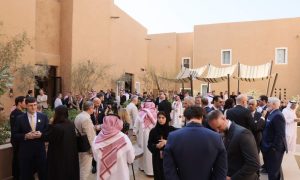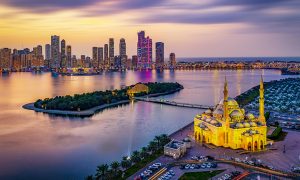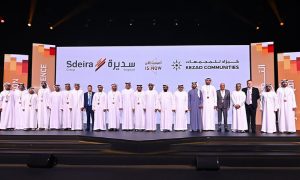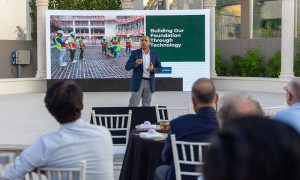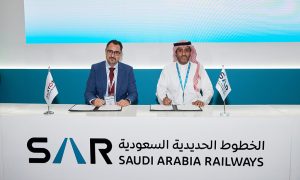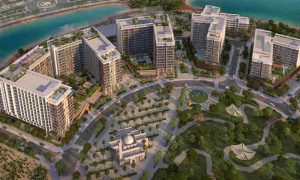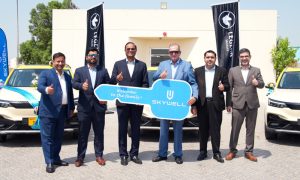Equipment insight: Click and order – Tenderd Interview
Arjun Mohan, CEO, Tenderd, tells CMME about how his young company is using technology to bring machinery owners and end-users on a common platform and enable more efficient use of kit with better return on investment
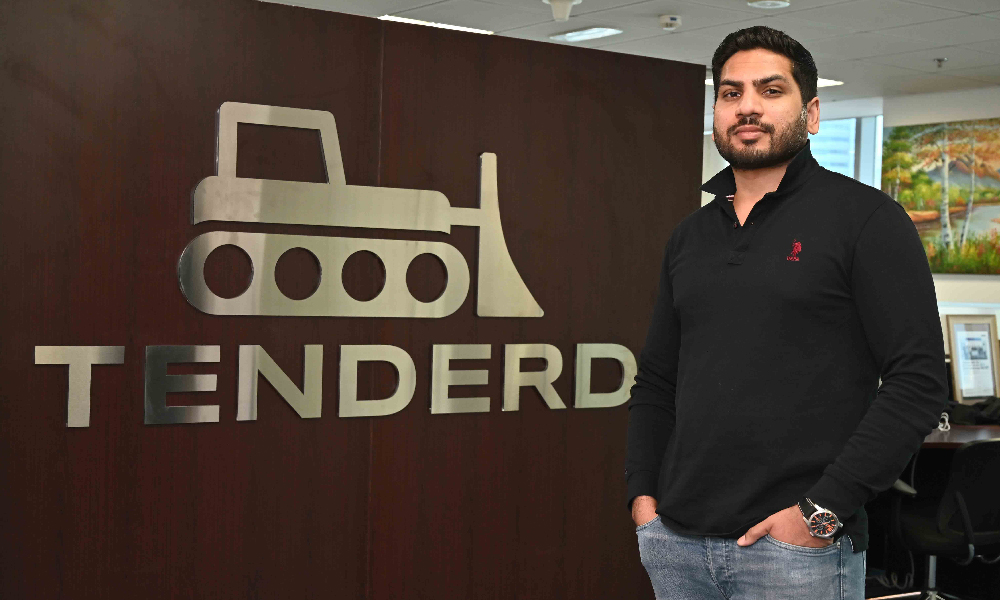
Please explain the concept behind Tenderd and how it helps users.
The concept of Tenderd came about when we saw a paradox in the market. There is a lot of idle equipment out there and contractors investing a lot of time and money behind these assets, which are not utilised even close to 100% of the time. But there are also a lot of contractors who are in need of equipment. So, we conceptualised Tenderd as a platform that connects contractors who need equipment to idle equipment that exists in a market.
In a way, it’s similar to the Uber or Air BnB model: we help increase utilisation of existing assets in the market. So, if you are a contractor with five excavators, you can list all five on Tenderd, and even if all of them are busy today, but three of them will be available in a month from now, you can have those rented out to somebody who needs it. So, you will be able to generate revenue out of your assets even when you ’re not using them.
Anybody with machines can enlist on our service. We build up our supply from three channels: contractors with idle equipment; equipment rental companies, whose current business is to rent out equipment and they can use us as a channel to get more hirers; and the third is dealerships that have excess inventory from previous years that they want to rent out.
On the other side of the spectrum, our clients are always the end users of equipment, typically contractors.
So, how does this work in practice?
One of the things we noticed is that is we can make the purchasing manager’s job really easy because using Tenderd they don’t need to run any ‘requests for quote’ processes with their suppliers every single time they need to find equipment.
And once the purchasing manager makes a decision, the equipment goes to the project director and project manager. Their main concern is making sure they get maximum productivity out of their machines. If I’m a project director and I have 100 pieces of equipment on site, 60 might be from my own plant and 40 from third-party suppliers. Of the 40, you might have four different suppliers providing 10 pieces of equipment each.
Now, it’s already difficult managing your own equipment, but definitely a nightmare managing all these third parties on site, because you never know what can happen on a site. So, we thought ‘how do we make the project manager’s job easier?’ By integrating IoT devices into all the equipment and then providing them transparency on productivity matrix in real time.
So, it could be light equipment, trucks or yellow plant that you have taken on rent – or even your own equipment. It could be equipment from third-party suppliers, from Tenderd or other sources including your own. How do you manage your entire mixed fleet – owned and rented – in one dashboard? With Tenderd, this is precisely what you can do. We physically embed an IoT device on machines under Tenderd customers and integrate the device.
If someone has telematics devices already installed, we can connect to that data via API (application programming interface) and unify the experience. If they don’t, we can still integrate it in terms of the device. There are three different tiers in this. The first is basic telematics and the most advanced is Tenderd Track Vision where we take not only the telematics data but also the visual data and then we synthesize that into a productivity matrix.
What is the extent of the service that Tenderd offers in terms of the availability of machines and the geography covered?
We now have over 5,000 pieces of equipment registered with us in the UAE, which is the territory that we operate in geographically. Our marketplace is not cross-border, so when somebody needs a piece of equipment, we have to arrange it from as nearby as possible due to logistics, cost issues and time issues. We started in Sharjah, then we opened in Dubai and now we are in Abu Dhabi as well.
We have also recently branched out to Saudi Arabia, with our Riyadh office focusing on the Saudi market – or specifically on Riyadh at present. Over time we will graduate into other Saudi cities as well.
While we are not a cross-border market, as I explained, if there is a requirement for machines in Riyadh that which are not available with us there, we can, for instance, send them from the UAE depending on the tenor of the contract and if it’s worthwhile.
How do you verify the machinery providers who sign up with Tenderd and how do you ensure fitness of the machines they are supplying on the platform?
We have put a team in place with members who have the expertise in this area. We in-sourced a lot of our expertise for greater control over quality. For example, our technical manager has managed the workshops of Saudi Aramco and other companies of a similar stature. He is also trained by the major OEMs and has a very competent team under him.
We have built a machine health checklist, which we share with all our suppliers, who have to do the initial verification. They follow our processes and send us pictures, which we use for virtual verification. And then, before mobilisation, we do an inspection as well.
Our checklist has 30 points. There are specific ones for each machine, but a general one too. For example, for a motor grader we look at the blade, the tyres, the cabin, etc., whereas for a dozer some other components could be more important.
We highlighted which parts of different machines are most likely to be critical depending on the machine type, and then we do a specific verification of these parts before doing a complete verification.
How does Tenderd enable contractors to increase productivity and improve sustainability?
In terms of productivity, an important factor is machine utilisation on site. Many machines on a job-site just sit there and are not even switched on, their hydraulics are not even engaged. We track that in real time with Tenderd Track Vision, providing contractors with data. We can show them how for an excavator on Site A, they’re spending on average $2 per cubic metre of earth removed, whereas on Site B, they are spending about $5 per cubic metre. We are able to get this granularity of data in real time and send it to their dashboards.
Among the devices we use are cameras to see the bucket to assess how full it is and what kind of material is in it, and then compare that against the tariff for the equipment to understand what the unit economics are per cubic metre. There is no other solution that does this.
Where sustainability is concerned, over 40% of equipment rental costs a month are actually diesel costs, which is a huge component of running a site. Efficient fuel consumption is an organic by-product, of running a more efficient site, and we try to run efficient sites with our productivity solutions. Also, on our checklist, we make sure the equipment meets emissions stipulations. We check the engine health and once the machine is on site we try ensure maximum utilisation in order to reduce overall emissions.
Are there any trends you have noticed in your operations?
We have been operational in the UAE for around 24 months and we see a lot more requirement for rental equipment. I feel a lot of contractors would rather spend out of their opex than their capex. A lot of the mega projects are joint ventures, which rarely take any equipment on their balance sheets, preferring instead to rent on a need basis.
Does Tenderd provide servicing and support for the equipment on its platform?
We take accountability for any issue on the site. We have a toll-free number where operators can call us right away. They can then track the status of repairs on the Tenderd Track Vision app like tracking an Aramex package. Information such as when the machine broke down and why, mechanic dispatched, mechanic arrived on site, issue diagnosed, comments – the entire timeline of how your machine is being fixed and when you can expect it to be running again can be tracked.
While we have our own mobile service team, we usually defer to the supplier first and see if they can take care of an issue. If they cannot, then we jump right in. If an issue is reported, we can either decide to fix it or replace the equipment. So, users will get some other suppliers’ equipment if the issue is too complex to fix quickly and can lead to a disruption in production. When you work with the market place, you have substitutability, so if we need to fix a dozer we can say you can’t open up the engine in the desert, as sand will go in and damage it even more. We find the next best machine with the quickest availability and mobilise that to the site.
Is there any particular equipment that you are seeing a high demand for in the UAE?
Yes. It’s a common machine that everybody uses – the backhoe loader. I think it’s like the Swiss army knife of equipment. Everybody uses it; everybody rents it; it’s really ubiquitous. The thing about the backhoe is that it’s not that expensive and you can do a lot of things with it. We see customers using various attachments with it, such as even a forklift extension to use it like a small carry crane.
How does the future look for Tenderd and the services that you are providing?
If you look at the mature markets, about 50% of equipment on any site is rented in the US and in Europe, its almost 65-70%. In the UAE, it’s about 30–35% and even lower in Saudi. So, I expect a trend of rentals becoming more prevalent in this part of the world.
I also feel OEMs are thinking about how they can create platforms for their equipment to be directly rented by the market because if contractors are going to buy less, overtime supply is going to decrease in the market. So, they would want their own equipment that they manufacture fresh off the factory line to be used in the market and they would manage the utilisation of that equipment.
And lastly, the future is about automation. You see it already in passenger vehicles but I see it as more inevitable for construction equipment because you have fewer variables on a construction site as compared to when you are on the road engaging with other cars and pedestrians. So, I see the automation of equipment becoming more and more prevalent, and Tenderd Track Vision – the technology we are working on – is like the first step in enabling a higher level of intelligence using your own existing fleet.
—————————————————-
Tenderd Track Vision: The tech is in the details
The Tenderd Track Vision is a vital app that counts among its features the use of video data off the buckets and blades of a machine to identify the amount of work done.
“Think of it like this – imagine you are there on the job-site in person, looking at every bucket and calculating the tonnage for every bucket. And you’re able to get you really detailed productivity data off that piece of equipment,” explains Arjun Mohan.
“We do this with cameras. Instead of a person doing it, we use machine vision to take video data and classify it according to what kind of material it is, what the productivity is, what were the cubic metres actually lifted in this load, the cycle times, etc. and give you really actionable information – such as telling you that you are spending $28 per cubic metre on this site.”
The technology can also diagnose why productivity might be low, for example, with an excavator – it may not be working but that could be because there aren’t enough trucks associated with the excavator. The technology can detect such reasons for low productivity or why the equipment is idle.
“We are able to pull this kind of information in real time and give it to you – so, it’s not just about the equipment; it’s also about the flow of work,” Mohan says.
Tenderd Track Vision can also help in improving safety, such as by giving alerts if a person is within an unsafe distance of a machine.
Tenderd has some illustrious partners in its technology development, including Nvidia and Google Video Studio for the devices installed on its machines and the annotation tools for video labelling. Also among its investors is the founder of Gmail, Mohan adds.






